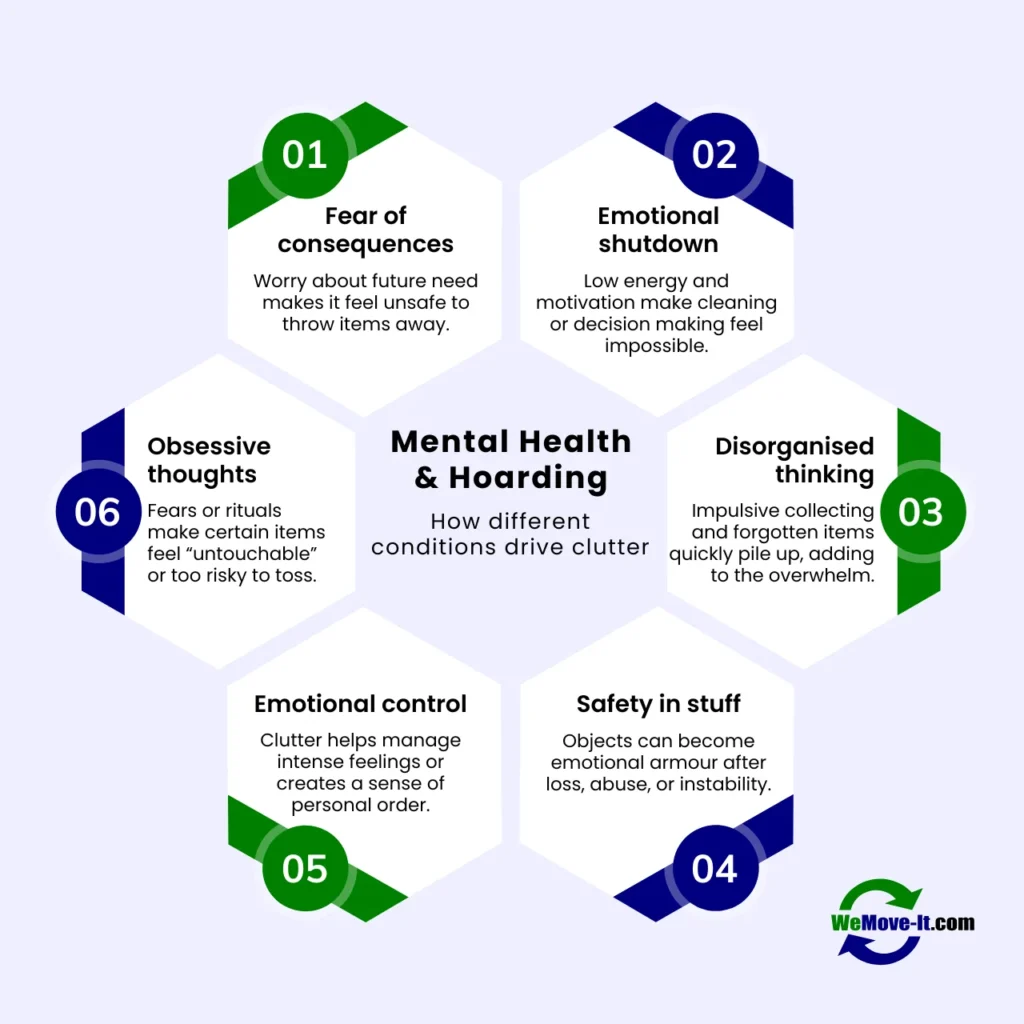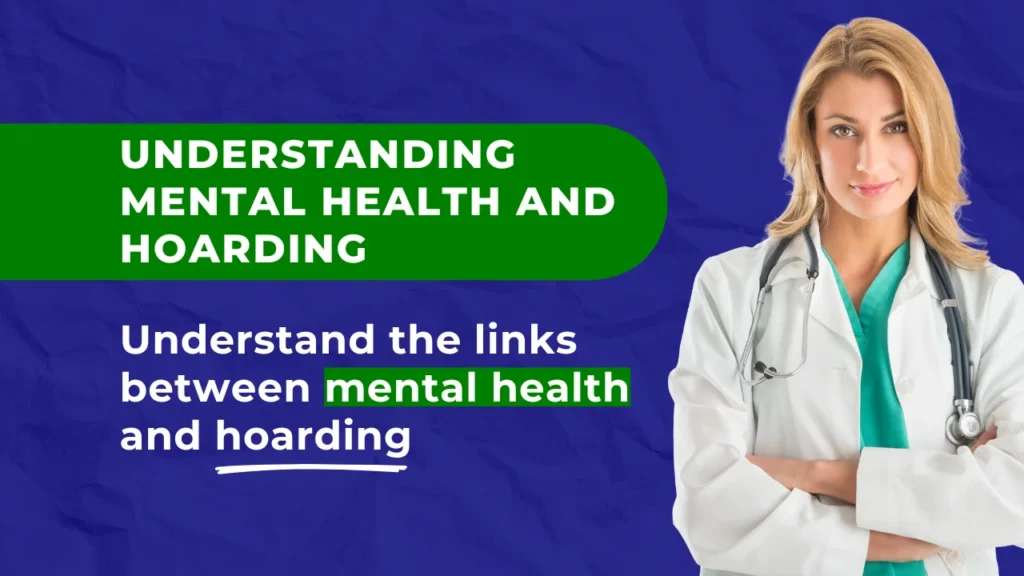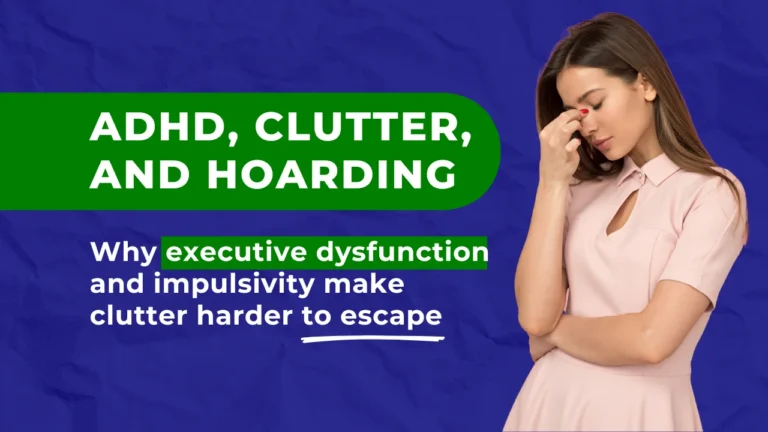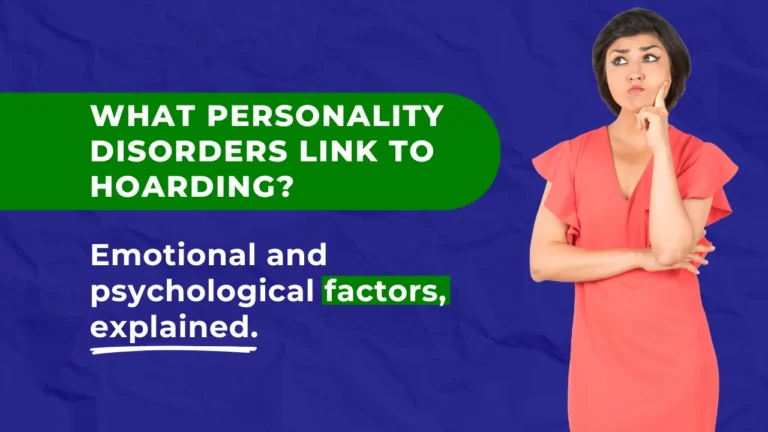You walk into the room and can’t see the floor. Piles of newspapers, unopened packages, clothing from years ago. It might look like a mess to most people but, for someone dealing with hoarding, this is more than clutter. This is a symptom.
Hoarding is often misunderstood. It gets written off as laziness or poor housekeeping, but the truth is far more complex. Behind those stacks of stuff is usually a person in pain, someone who’s anxious, overwhelmed, or trying to cope the only way they know how.
This article breaks down the connection between mental health and hoarding, shining a light on the emotional and psychological weight behind the clutter. If you’re an adult child, caregiver, or social worker trying to make sense of it all, this is for you.
What Is the Link Between Mental Health and Hoarding?

Hoarding isn’t as simple as “having too much stuff.” It’s often tied to underlying mental health conditions. In fact, people who hoard are more likely to have one or more diagnosable mental illnesses. This is called comorbidity: when two or more conditions show up at the same time and feed into each other.
For someone who’s already anxious or depressed, clutter can become a kind of armor. Some folks cling to their things because it feels like the one part of life they can control. Either way, it’s not about the actual items, it’s really more about what those items represent emotionally.
Understanding these root causes matters. Because without that understanding, cleanup is just a surface-level solution.
Common Mental Health Conditions That Influence Hoarding
Let’s break down a few of the most common mental health conditions that can drive hoarding behaviours. Think of it as diving more into hoarding psychology as mental illness and hoarding go hand-in-hand.
Anxiety Disorders

People with anxiety often worry about the what ifs. What if I throw this away and need it later? What if something bad happens because I got rid of it? That fear, sometimes vague and sometimes specific, makes it feel safer to keep things, even if those things are broken, useless, or long forgotten. Letting go feels dangerous. Not in theory. In the gut. This is very relevant when learning about hoarding psychology.
Depression
Depression can sap a person’s energy, motivation, and decision-making ability. Tasks like cleaning, organizing, or even just getting started can feel impossible. Clutter creeps in quietly. One thing becomes two, then ten. And when you’re drained, even the smallest task feels impossible. It becomes emotional paralysis.
OCD (Obsessive-Compulsive Disorder)
OCD isn’t always about handwashing or checking locks. In hoarding cases, it might show up as intrusive thoughts (fears that something terrible will happen if an item is thrown away). Or the item may become linked to a ritual or superstition. It doesn’t make sense to anyone else. But that doesn’t matter. The clutter is tangled up in fear and obsession.
ADHD (Attention-Deficit/Hyperactivity Disorder)
People with ADHD often struggle with organization, focus, and memory. That can lead to impulsively buying or collecting items, then forgetting they exist. Over time, the clutter builds; not from neglect, but from a brain that works differently. Disorganization isn’t the whole story, but it plays a big role.
Individuals with ADHD may experience unique challenges related to hoarding behaviors. For a more in-depth exploration of this connection, consider reading our article on ADHD and Hoarding: Understanding the Link.
Trauma / PTSD
For some, hoarding starts after trauma like losing a loved one, surviving abuse, or enduring long-term instability. Keeping things becomes a way to feel safe or stay connected to the past. Letting go can feel like reopening a wound. Sometimes it’s not even the item, it’s the silence that comes if it’s gone.
Personality Disorders
Though less talked about, certain personality disorders can play a part too. Emotional dysregulation (where someone’s feelings swing rapidly or feel too intense) can lead to hoarding as a way to self-soothe or create order.
Emotional Triggers That Often Accompany Hoarding
Mental health and hoarding isn’t the only factor. Emotional triggers play a big role in hoarding behaviours too.
Grief, loneliness, and unresolved loss are common sparks. A spouse dies, a child moves away, and suddenly the house starts filling up. It’s not always conscious, but it’s real. The items become stand-ins for people, moments, and connections that are gone.

There’s also sentimental attachment. The kind that makes it hard to part with even the smallest trinket. It’s not only a mug or a receipt. Right? It’s the mug Grandma gave me, or the receipt from our last movie night together. When every item tells a story, how do you throw any of them away? This really plays into mental illness and hoarding and the complex relationships.
Why Understanding Hoarding Psychology Matters
Trying to tackle hoarding without understanding the mental health component is like mopping up water without fixing the leak. You might clear a room, but the deeper struggles remain and the clutter creeps back in.

Mental health conditions drive hoarding behaviours. Without support for the root issues, it’s nearly impossible to make long-term progress. The Mayo Clinic emphasizes that Cognitive Behavioral Therapy (CBT) is the primary treatment for hoarding disorder. Support groups, peer networks, and collaboration with professionals who understand the complexities of hoarding can also be beneficial. We’re not talking about cleaning crews, but teams trained to treat people with dignity.
What You Can Do If You’re Supporting a Hoarder
If someone you love is hoarding, it’s easy to feel helpless. Or frustrated. Or both. But there are things you can do, starting with shifting the goal from “clean it up” to “support the person.” It’s a move toward understanding hoarding psychology.

- Be patient. Change doesn’t happen overnight.
- Learn more. The more you understand about hoarding psychology, the more helpful you can be.
- Don’t go it alone. Bring in professionals: mental health workers, therapists, or hoarding-specific cleanup services who treat the person with care, not judgment.
- Focus on safety, not perfection. Start small. Clear pathways. Check for fire hazards. The goal isn’t a spotless house, it’s a safer, healthier one.
And most of all: remember that hoarding isn’t about the ‘stuff’. It’s why the stuff is there.
When It’s Time for Help That Respects the Whole Story
We’ve helped families across Hamilton clear paths: sometimes through living rooms, sometimes through years of heartache. Mental illness and hoarding are very real. When you’re ready, we’re here. Quietly, respectfully, and without judgment.
{ "@context": "https://schema.org", "@type": "ImageObject", "name": "mental health and hoarding infographic", "description": "Infographic explaining how mental health and hoarding are connected through six common psychological conditions.", "contentUrl": "https://wemove-it.com/wp-content/uploads/2025/03/mental-health-and-hoarding-infographic.webp", "keywords": "mental health and hoarding, mental illness and hoarding, hoarding psychology, hoarding behaviours, psychological causes of hoarding", "uploadDate": "2025-03-25", "creator": { "@type": "Organization", "name": "Wemove-It.com" }, "license": "https://wemove-it.com/", "acquireLicensePage": "https://wemove-it.com/", "creditText": "Designed by Wemove-It.com", "copyrightNotice": "© 2025 Wemove-It.com" }


